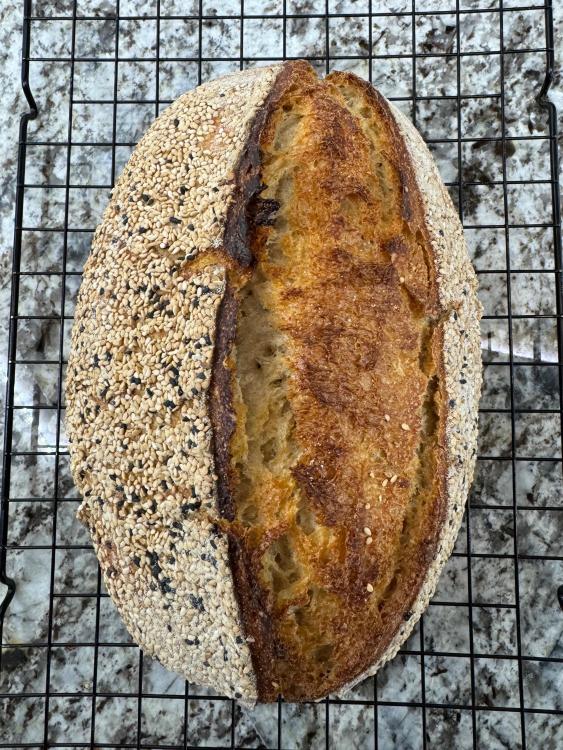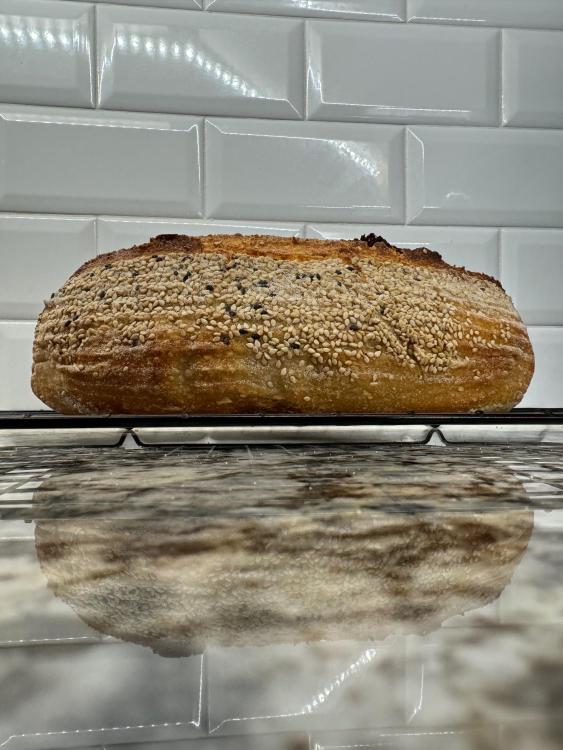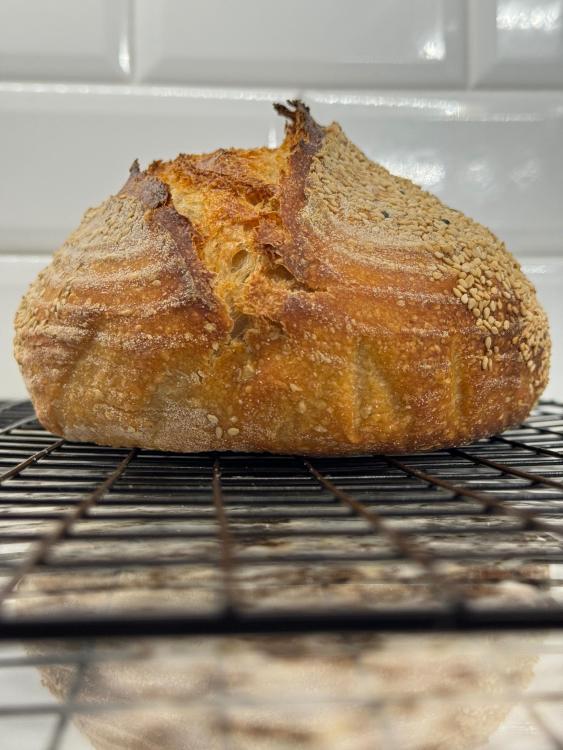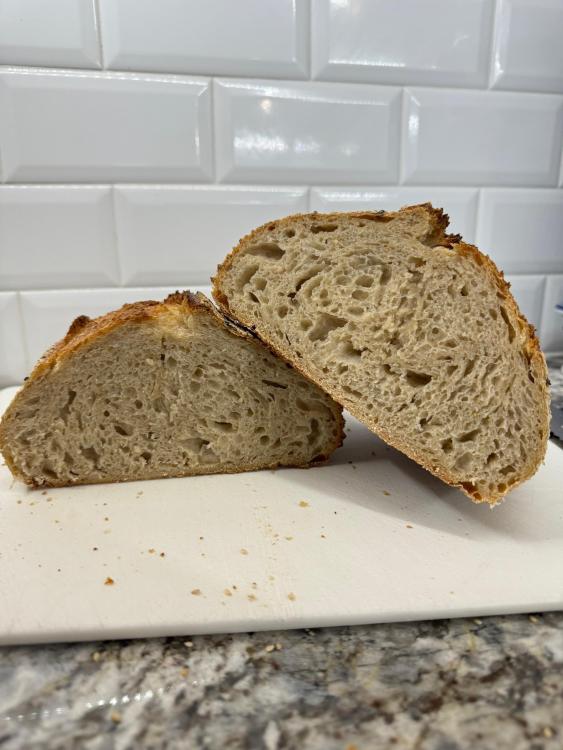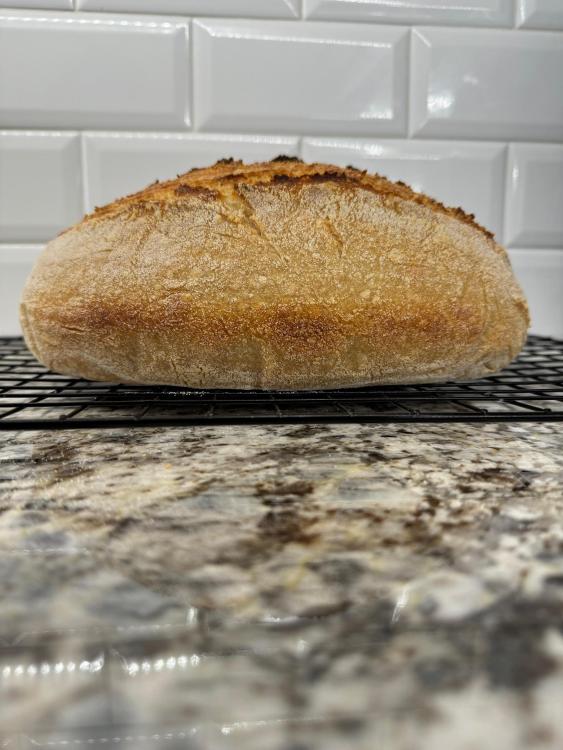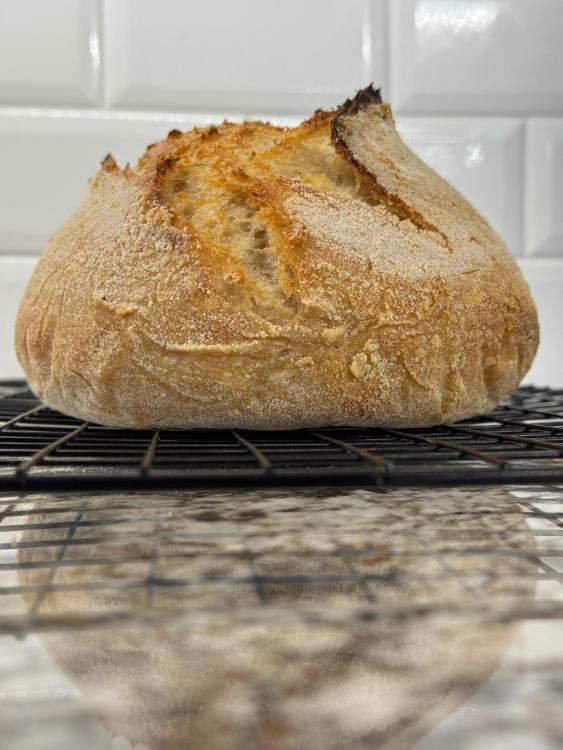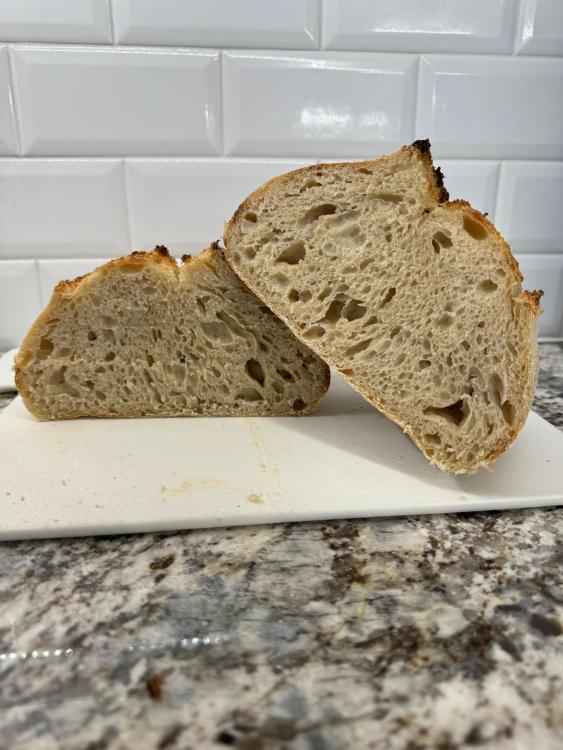Frozen sourdough two ways. This little experiment had its birth because I wanted to explore options for shipping sourdough to friends.
Recipe (Tartine) and process for both loaves:
- 450g bread flour
- 50g whole wheat flour
- 375g water
- 100g starter
- 10g salt
- S&Fx3 with 30 min rests
- CFx2 with 30 min rest
- BF at 80F to 75% increase
At this point, the process for the two loaves diverged, as noted below.
For Loaf #1 (seeded):
- Preshape and rest 30 min
- Final shape and rest 30 min
- CR 18 hrs
- Par bake in preheated DO at 450F for 30 min covered (internal temp 197F); cool to RT
- Freeze in heavy plastic bag 48 hrs
- Thaw in proofer at 80F for 6.5 hrs (internal temp 74F)
- Bake in preheated DO at 450F for 30 min covered; 5 min uncovered; cool to RT
For Loaf #2 (plain):
- Final shape, place in plastic-lined banneton and freeze in heavy plastic bag 48 hrs
- Thaw in proofer at 80F for 6.75 hrs (positive poke test)
- Bake in preheated DO at 450F for 30 min covered; 10 min uncovered; cool to RT
Discussion:
- I saw the par baked loaf method explained by Foodgeek and the frozen dough idea mentioned by Connie David Hedgepeth-Smith, a member of the Sourdough Geeks Facebook group.
- Both loaves were delicious and had very good crust and crumb structure.
- The crust of the par baked loaf was considerably more chewy than the frozen dough loaf - almost "tough."
- The par baked loaf seemed to deflate a bit under its own weight while cooling. As a result (and doubtless due to the fact that the crust was essentially twice-baked), it had less overall oven spring than the frozen dough loaf.
- The frozen dough loaf was a bit more challenging to score, as the dough was at RT prior to baking.
- To answer the shipping question, the frozen loaf method would obviously be much simpler for a recipient to manage. Wildgrain is one company that specializes in shipping frozen, par baked bread and other baked goods. That said, I feel the frozen dough method yielded a slightly better loaf and could perhaps be final proofed and baked in a bread tin to simplify finishing.


